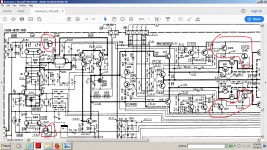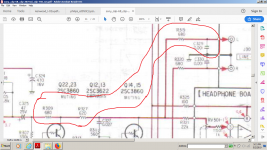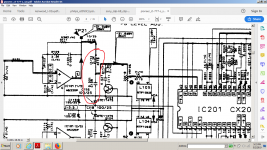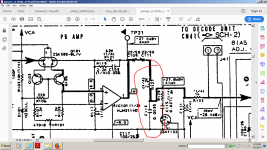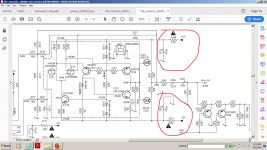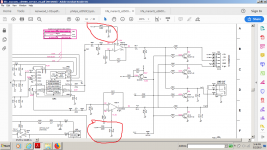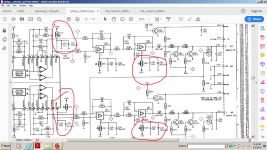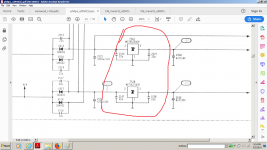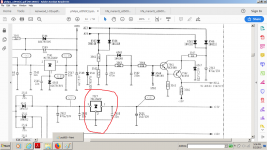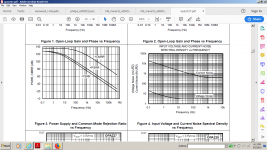NOW: if i only use op-amps with high psrr and cmrr for a low noise preamps i only use a 4.7, 10, 22...47ohms resistor(depending on the load current) series with 220uf...470uf capacitor(usually i use the most infamous panasonic fc used and reused and taken from scraped industrial electronics, but if i have the opportunity of using better capacitors i won't refuse it.
This power supply RC filter approach is a very good one, especially because its filtering action increases with frequency at 6dB per octave, and this can counteract the typical -6dB per octave reduction in all good things derived by regulators or amplifiers.
If the corner frequency is set low, for example to 7.2Hz using a 47Ω series resistor and a 470µF shunt capacitor, supply noise rejection will be around 20dB at 72Hz, 40dB at 720Hz, 60dB at 7.2kHz, and so on. This is very helpful, and as long as the static voltage drop across the series resistor is taken into account, it can be an efficient and low cost way to add power supply isolation to a circuit.
An externally hosted image should be here but it was not working when we last tested it.
Attachments
Regulator
I want to design a filter, so, I need a low noise voltage regulator of 15V. Is it ok for LPF.
I want to design a filter, so, I need a low noise voltage regulator of 15V. Is it ok for LPF.
This power supply RC filter approach is a very good one, especially because its filtering action increases with frequency at 6dB per octave, and this can counteract the typical -6dB per octave reduction in all good things derived by regulators or amplifiers.
If the corner frequency is set low, for example to 7.2Hz using a 47Ω series resistor and a 470µF shunt capacitor, supply noise rejection will be around 20dB at 72Hz, 40dB at 720Hz, 60dB at 7.2kHz, and so on. This is very helpful, and as long as the static voltage drop across the series resistor is taken into account, it can be an efficient and low cost way to add power supply isolation to a circuit.
I simply find this rc circuit in pretty much everything i fix or buy form the 60's, 70's, 80's , 90's and 2000's...so I could simply assume that it must be good even if i wouldn't know any theoretical aspects.
Everybody, and I mean everybody used it most of their designs , being it high end, hi-fi or consumer products.
Now i'm happy that somebody produced such a simple and good explanation for that.
One more rc filter in action filtering a very low psrr circuit the HDAM2 in Marantz cd6000:
An externally hosted image should be here but it was not working when we last tested it.
The same -6db /octave RC filter , just different values cut the signal bandwidth so that you won't have weird oscillations or intermodulation due to high freq content in almost all the hi-fi or consummer products of the last 50 years too...
Attachments
Last edited:
Something tells me that Phillips engineers weren't stupid:I want to design a filter, so, I need a low noise voltage regulator of 15V. Is it ok for LPF.
Attachments
Last edited:
The power supply RC filter also does a useful thing in shifting the transient signal induced supply currents away from the power supply and into the circuit's local ground. If the time constant is high enough, the majority of the transient current gets sourced through the shunt cap from local ground, and not the power supply. This makes the signal current loop much smaller, since it now excludes the power supply. It also does a useful thing to make the signal current loop of a single ended amplifier circuit much smaller and more controllable.
Indeed it's used heavily in sensitive instrumentation too for that reason.For current and voltage error and regulation circuits in SMPS using op-amps with low idle current and high precision op-amps 47/100nf...1uf film do wonders and it's often used with circuits like opa2227 which has huge psrr and cmrr only at at low freq completing the whole rejection spectrum this way. Of course you need special reference circuits for that kind of application if the noise is very high and you need much precision.The power supply RC filter also does a useful thing in shifting the transient signal induced supply currents away from the power supply and into the circuit's local ground. If the time constant is high enough, the majority of the transient current gets sourced through the shunt cap from local ground, and not the power supply. This makes the signal current loop much smaller, since it now excludes the power supply. It also does a useful thing to make the signal current loop of a single ended amplifier circuit much smaller and more controllable.
Attachments
- Status
- Not open for further replies.
- Home
- Amplifiers
- Power Supplies
- ultra low noise regulators
